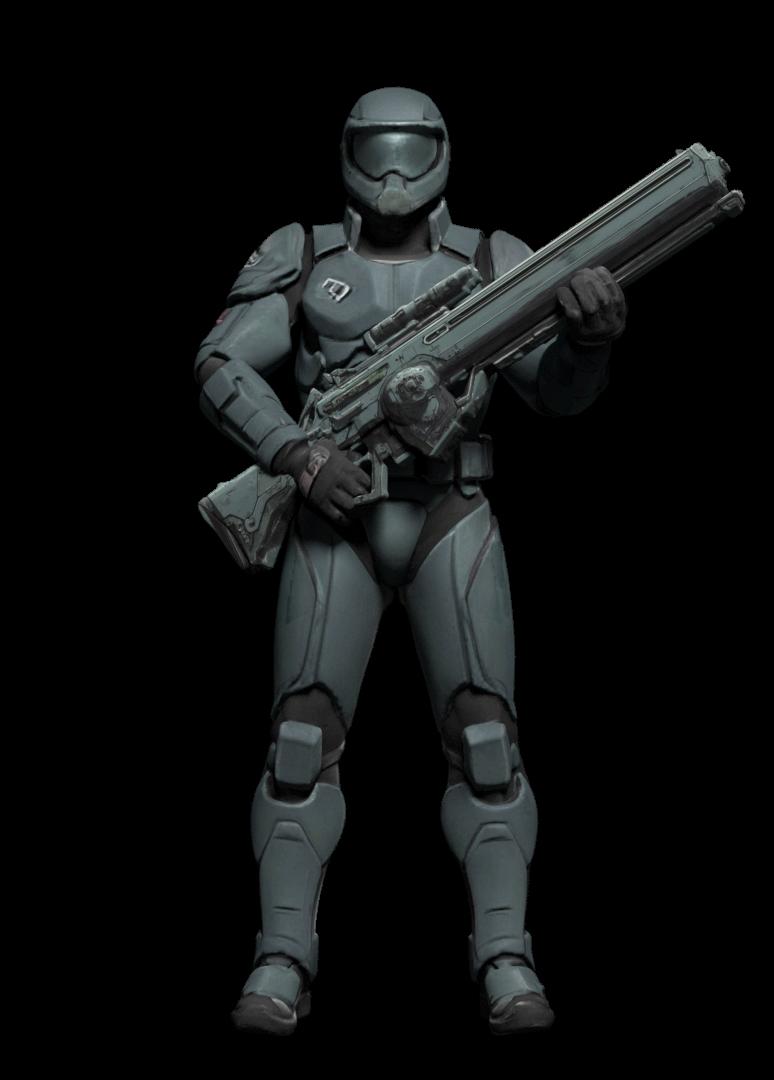












Peace is only a time between wars. Do not be surprised.
When war erupts, it doesn’t just shift borders — it upends the invisible veins that feed economy and defense: its logistics. Stations, gates, systems, become choke points overnight. In modern space conflicts, where a blockade can cripple a corporation or halt cargo delivery, logistics is no longer a background concern — it’s the battlefield’s lifeblood.
Today supply chains are lean, efficient, and cost-effective — but also dangerously fragile. In peacetime, a shortcut saves time. In wartime, it’s a dangerous path. A single gatecamp can have effect across entire sectors, grounding spacecraft, delaying ammunition supplies, or starving troops of essentials. Recent conflicts have shown how quickly ordinary commercial routes can turn into strategic choke points, and

previously routine deliveries are delayed by rerouting, or the sudden loss of critical spaceship.
Successful wartime logistics relies on agility and redundancy. Parallel supply routes ensure that if one artery is cut,
Across all Caldari clusters, workshops and warehouses are running low on uniforms and formal suits as material shortages strain an already fragile textile supply chain. Recent industrial difficulties in ports, rail terminals, and garment factories have halted deliveries of fabrics, buttons, and synthetic fibers. Many manufacturers report unfinished orders piling up. “We have the staff and the machines,” said one factory manager, “but no cloth to work with. There isn't even enough material for a beret”. The shortage hits hardest in sectors that rely on standardized clothing — from military to security and
healthcare. Even some of the local EDENCOM offices have authorized extended use of old uniforms or temporary substitutes, while others turn to small workshops to fill urgent needs. Waiting lists stretch for months, and prices for quality materials are climbing. “For many, a proper spacesuit isn’t luxury — it’s part of the job,” said a Jita 4-4 tailor. Industry experts warn the disruption could persist well into next year. Garrisons and offices are urging investment in regional textile production and recycling programs to reduce dependence on long supply chains.
others could compensate. In today’s context, that means having multiple suppliers, backup communication networks, and the ability to shift at short notice. Diversify supply lines, relying on one trade partner or route is a gamble.

DUL Mk1 was designed by only one engineer! Did you know?


Where sky meets the ground, something durable and fast is needed.
The DUL Mk1 (Deployable Universal Lander Mark 1) is a multi-role dropship designed to put men, machines and materiel from orbital or high-atmosphere transport directly onto a contested surface — and to do so with precision hover capability and rapid turnaround.
DUL Mk1 occupies a niche between courier shuttles and armored personnel carriers: it is a compact workhorse built to land, hold station, disgorge force and depart.
Executive summary / quick facts
• Crew: 3–5 (pilot, copilot/engineer, 1–2 loadmasters/techs)
• Length: ~22 meters
• Width: ~14 meters
• Role: Orbital-capable dropship / troop & vehicle transport / tactical insert/ extract
• Propulsion: Quad-engine combinedcycle (atmospheric lift + rocket/ion hybrid for orbital phases)
• Propulsion count: 4 main engines + distributed attitude/hover thrusters
• Troop capacity: 30 fully equipped
troops + berthing and life-support for short missions
• Power armor: Capacity for 2 MTACs (Mechanized Tactical Armor/Combat suits) in mission stows
• Vehiclecarriage: Space for 3 light vehicles (e.g., APVs, light APCs) or 2 heavy vehicles (light tanks or medium APCs)
• Hover: Capable of holding a single point hover above ground for prolonged periods (hover endurance dependent on fuel/mission profile)
• Cargo bay: Modular ramp door / quick-change mission bay with configurable fittings
• Defensive fit: Composite/ceramic armor panels, ECM/IR suppression suite, optional hardpoints
Notable: Designed from the start for quick turnarounds, austere-field maintenance and modular upgrades.
Origins and design philosophy
The DUL program started as an operational requirement: a single vehicle able
to deliver a reinforced squadron-sized force (roughly a platoon) and their mechanized supports from low orbit to surface. Constraints that shaped the DUL Mk1 were:
Precision insertion: The craft had to hover stably above a single point for accurate vertical insertion directly into the fight. This demanded precise attitude control and a redundant hover architecture.
Orbital integration: Rather than rely on intermediate transfer vehicles, designers wanted the dropship to be orbitalcapable — able to perform de-orbit burns and reach low orbit.
Versatility: It needed to accept sidemission kits: troop transport, vehicle ferry, medevac.
Key design features
Fuselage: A semi-monocoque composite frame using layered ceramic-carbon composites and tritanium honeycomb substructures where heat and impact resistance are required. The structure balances thermal protection for orbital
re-entry phases and the toughness needed for combat exposures.
Cargo bay: Rectangular cargo bay with rear ramp. Sized to hold three light APCs or two heavier vehicles. Interchangeable rail-mounts allow rapid reconfiguration for troop seating, medical modules, or cargo pallets.
Access: Full-width rear ramp with hydraulic dampening.
Deck fittings: Multiple tie-down points and quick-change mounts for mission modules (e.g., stretcher racks, weapons, salvage winches).
Main engines (4): Each main engine is a combined-cycle unit capable of functioning as:
• A high-thrust chemical rocket for orbital insertion and de-orbit burns;
• A plasma/ion-assisted thruster for efficient long-burn phases in upper atmosphere/near-orbit;
• A vectored-thrust mode for bulk vertical lift.
Thermal management: Active heat exchangers and ablative panels protect the landing surfaces; propulsive plume shielding reduces back-blast effects on the landing zone.
Avionics, navigation, and flight control: Fly-by-wire triple-redundant flight computers with deterministic control loops optimized for hover and vertical insertion. LIDAR/EO sensor suite for groundrelative navigation and precision hover even in smoke/dust or degraded GPS. Autoland and hover-hold modes allow human pilots to command or to hand off to autopilot for long-duration hover while troops embark/disembark.
Troop accommodations: Seats for 30 troops, quick-release harnesses, individual oxygen hookups for high-atmosphere drops, under-seat storage for personal equipment.
MTAC stowage:Two full MTAC docks in the bay with power/data umbilicals for pre-mission checks. Dock-systems provide rear anchor points and rapid-release mechanisms.
Life support: Environmental control for short missions (hours to a day) with reserve air and filtration; designed as a tactical insertion craft rather than longrange habitation.
Medical module capability: A plug-in med module can replace troop seats to create a 6–8 bed forward surgical capability.
Armor: Compositearmor panelswithlocalized reactive inserts at high-threat zones. Not heavy battle-tank armor, but optimized to balance weight and ballistic protection for small arms and shrapnel.
Countermeasures: IR suppressors for engine plumes, chaff/flare dispensers, an ECM package to jam short-range targeting and guided threats.
Optional hardpoints: Light weapon mounts (gun pods, point-defense systems) for escort variants or when the ship is expected to operate in higherthreat environments.
Concept sketches and operational requirements were drawn from several theaters: highly urban insertion scenarios, arctic/forested terrain exfiltration, and littoral assaults.
Prototype phase (Mk1-P)
Propulsion trials: Early prototypes emphasized engine reliability. Initial combined-cycle units had issues with thermal cycling between rocket and plasma modes; improved heat-tolerant alloys and staged cooling solved the worst degradation.
Hover tests: The Mk1-P could hover for minutes at a time but needed improvements for sustained hover with full loads.
Structural tests: Simulated hard deck landings exposed stress points around the ramp hinge and rear fuselage. Reinforcements were added and ramp damping improved.
Qualification and operational testing (Mk1-Q)
Troop load tests: Full-load troop embark/disembark cycles emphasized ergonomics and egress times. DUL teams achieved a rapid debark sequence: troops ready-to-dismount in ~90 seconds from hover-station.
Vehicle trials: Light vehicle loading/unloading proved feasible on unimproved terrain when supported by inflatable ramps and deck plates. Heavier vehicles required ground support or short roll-off maneuvers.
Orbital trials: Integrated mission tests with orbital carriers demonstrated deorbit capability. The Mk1 achieved con-
trolled re-entry seals and used its main engines for final descent burns; the combined-cycle engines performed adequately.
Operational acceptance (DUL Mk1)
After several iterations of avionics tuning and propulsion upgrades, the DUL Mk1 was accepted into service.
Operational use and doctrine
Used for rapid, pre-planned insertions with suppression of local air defenses. Combined with escorting gunships or area-denial assets when operating within SAM/AAA range.
Longer-exposure hovers for medevac or extraction missions.
Vertical insertion (ORB→Surface): Deorbit burn from low orbit, atmospheric braking, and powered descent. Hover above objective point, rapid troop deployment and vehicle offload.
Tactical extraction (Surface→ORB or carrier): Rapid pickup under fire; hover while boarding, then vertical ascent supported by plume-suppress techniques to reduce detection and avoid collateral damage.
Tactical redeployment within theater: Short orbital hops between forward staging areas and frontline pads, used as a "shuttle" for mechanized squads and repairs.
Humanitarian/evacuation: Rapid insertion of medical modules and evacuation of casualties in austere conditions, especially where runways are unavailable.
The DUL Mk1 is neither the heaviest nor the fastest craft to ever touch a battlefield, but its design balances three hard demands — orbital capability, precision hover, and substantial cargo capacity — in a compact, field-serviceable package. In practice it has turned potential show-stoppers (no runway, hostile terrain, urgent insertion needs) into operational options. Commanders and engineers alike regard it as a toolbox: not the only answer to a problem, but often the right one when rapid, direct force projection from space to ground is required.

Serve. Explore. Protect the Frontier.
The stars are calling — and the Blue Star Fleet needs you.
Across the vast expanse of known space, humanity’s colonies and trade routes rely on courage, discipline, and unity. Every day, our fleet stands watch: defending convoys from raiders, guiding explorers through uncharted systems, and ensuring peace among the stars. Now, you can be part of that mission.
As a Blue Star Defender, you will join the proud ranks of pilots, engineers, technicians, medics, and strategists — individuals who embody precision, loyalty, and the unbreakable will to protect. Whether aboard the sleek frigates of the patrol lines or the mighty capital ships of the core fleet, your actions will shape the future of humanity.
Recruits undergo advanced training in orbital tactics, deep-space navigation, and zero-gravity operations. You will learn to master cutting-edge technology — from plasma drive systems to vorton arrays — while developing the teamwork and leadership that define every Blue Star unit.
We serve not for glory alone, but for the safety of our worlds, the freedom of our people, and the promise of exploration. The blue of our uniform stands for vigilance — a beacon in the dark, a pledge to defend what others only dream of reaching.
Enlist Now!
Adventure awaits beyond the stratosphere. The frontier is expanding — and it needs defenders with vision, skill, and heart.


DRINK
FEEL IT, LOVE IT,


